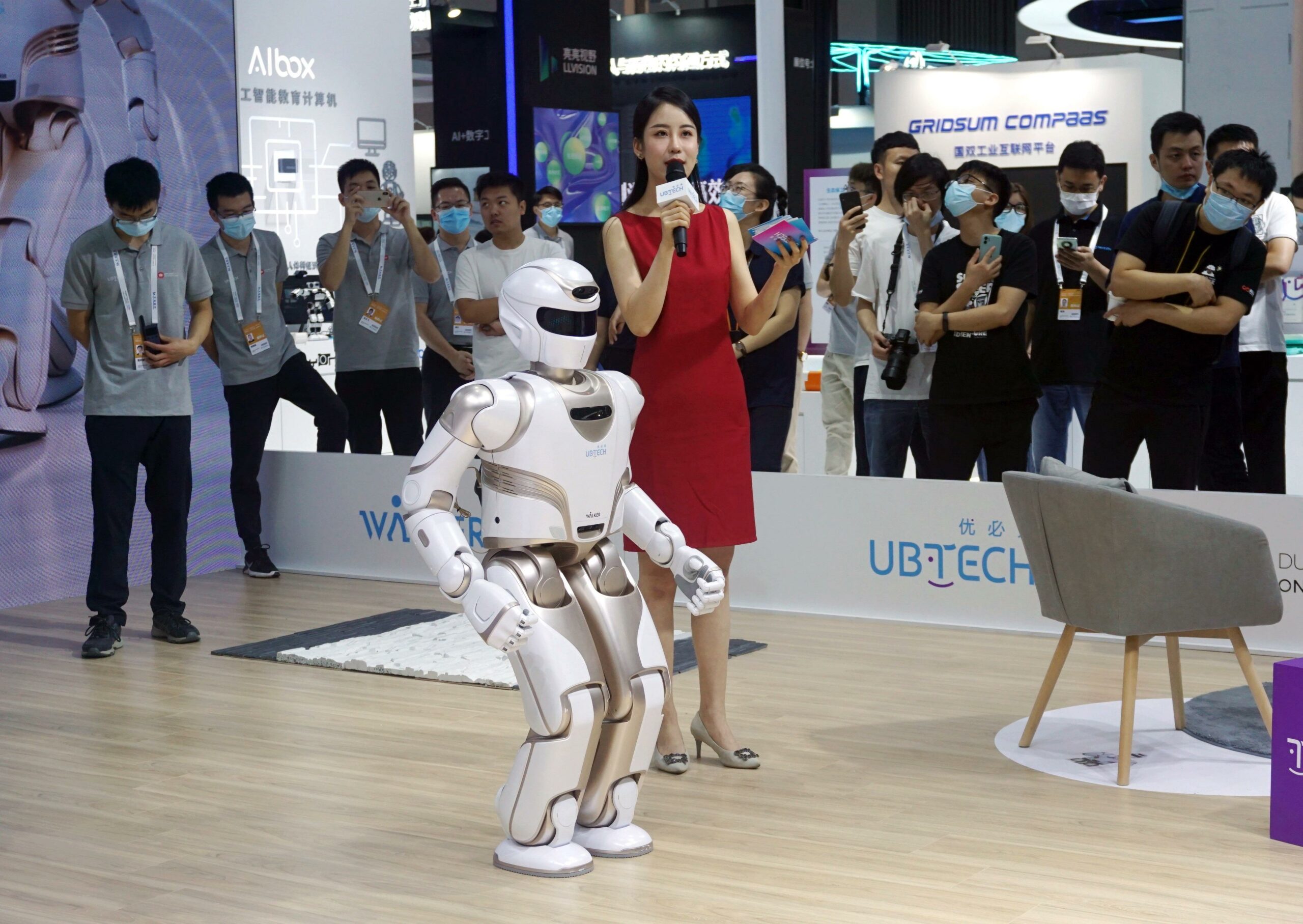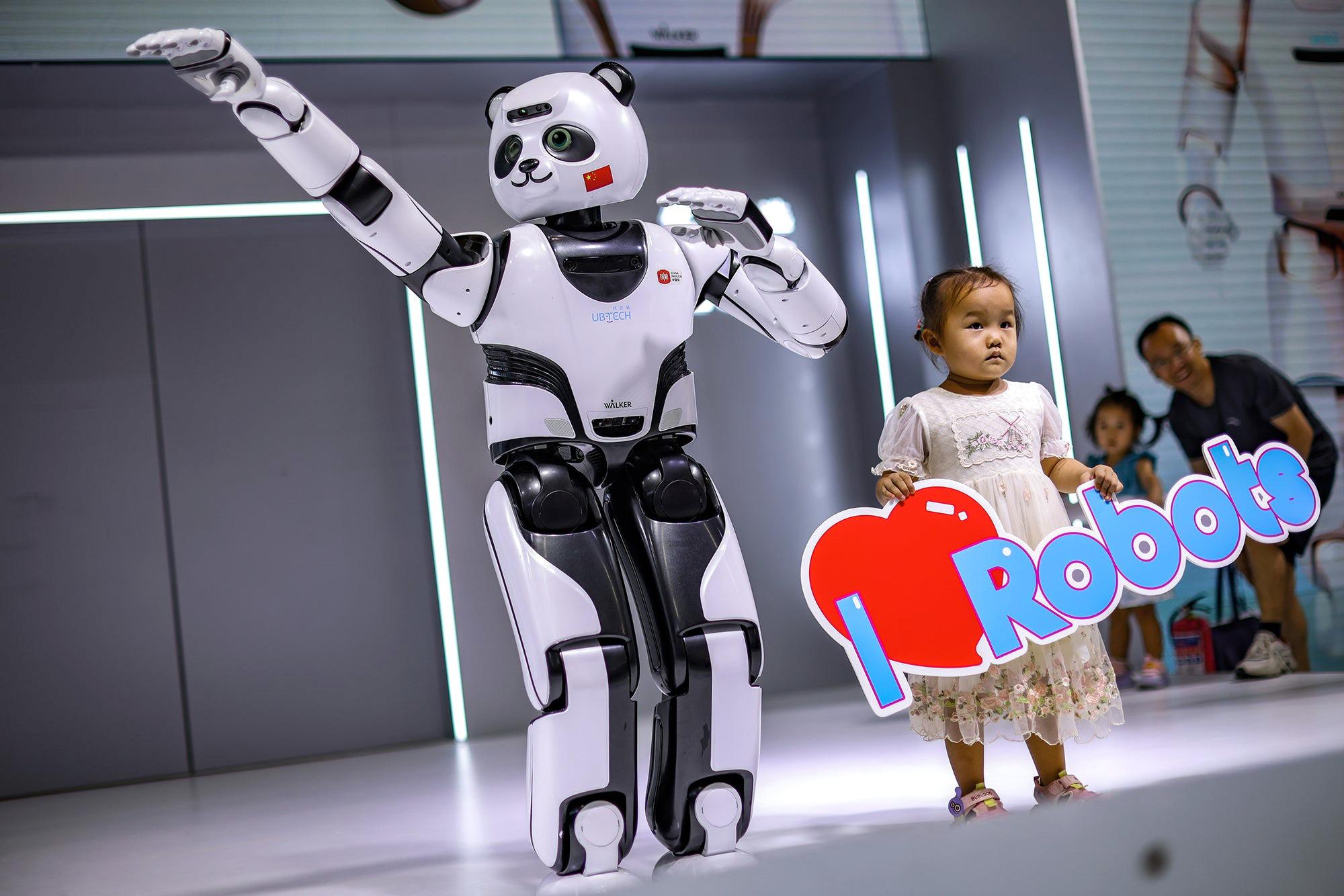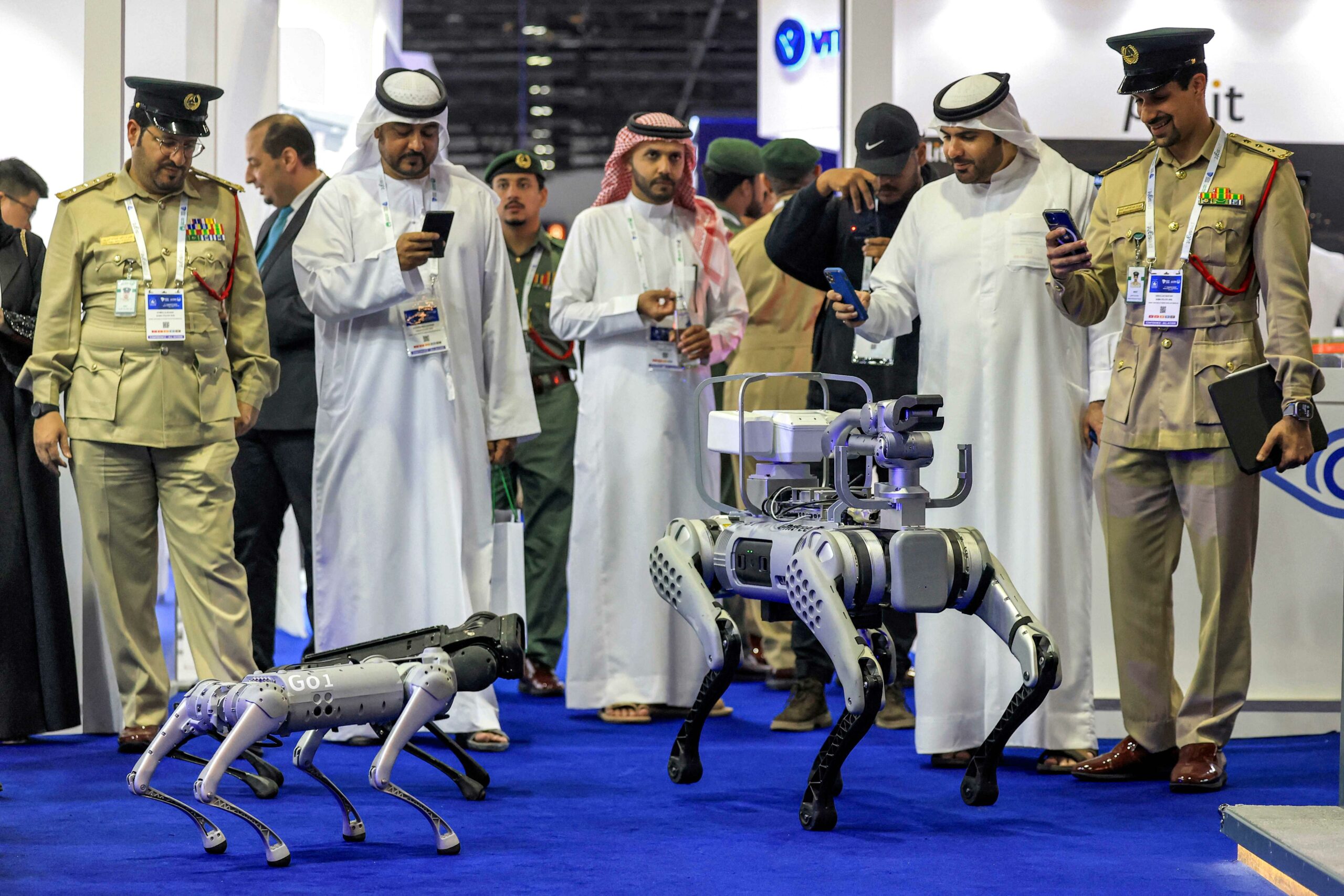ANN/CHINA DAILY – Upon viewing a video of a sleek, futuristic humanoid robot manufactured in China in August, Andrej Karpathy promptly conveyed his enthusiasm. In a tweet, he exclaimed, “I’d like to have one, or maybe two or a few more.” He went on to praise its features, noting its USD90,000 price tag and 47-kilogrammes (kg) weight, emphasising that the humanoid design was indeed the ideal form.
Karpathy, a founding member of OpenAI, the United States (US)-based company behind the widely acclaimed generative artificial intelligence (AI) platform ChatGPT, was referring to the Unitree H1. This 1.8-metre-tall humanoid, equipped with laser radar technology, was developed by Unitree Robotics, a start-up based in Hangzhou, China.

The video also demonstrated the robot’s remarkable capabilities, including its ability to move at speeds exceeding 1.5 metres per second. It showcased the robot’s capacity to regain balance within just two steps after experiencing a sudden kick and even anticipate slight sidesteps when it detected a human potentially lifting a foot.
According to its developer, the Unitree H1’s maximum knee joint torque reaches 360 newton metres and each leg has five degrees of freedom.
Driven by technological advancements in AI, humanoid robots like Unitree H1 are the hottest topic in the intelligent robotics industry today.
“Currently, new technologies, products and formats represented by humanoid robots and general artificial intelligence are thriving and becoming the pinnacle of global technological innovation, a new track for future industries, and a new engine for economic growth,” said China’s Vice Minister of Industry and Information Technology Xu Xiaolan.
Breakthroughs in AI, she said, have provided an important driving force for the innovative development of humanoid robots, and the world is experiencing a wave of integration between humanoid robots and general AI.
General AI refers to AI’s versatility in doing multiple tasks such as writing essays, checking program bugs and making business plans. This differentiates it from previous narrow AI projects that excel in only one area.
Xu said that with general AI as the engine, efforts will be made to create the “brain” and “cerebellum” of humanoid robots, support the construction of a national humanoid robot manufacturing innovation center, key laboratories, and other innovation carriers to enhance the supply capacity of key common technologies, and empower more industries to innovate and develop.
Ideal interface
The global humanoid robot market is expected to grow at a compound annual growth rate of 52.8 per cent from 2023 to 2030, according to market research company ReportLinker.
Humanoid robots offer the ideal interface for human-robot interactions as they can replicate a person. These are all results of advanced robotics research and ongoing tech development, ReportLinker said.
AI, the creation of robot hardware, the implementation of bipedal or wheel drive locomotion, and human-robot interaction are the four key categories under which humanoid robot research is classified. These commercial developments are expected to help in the market expansion of humanoid robots, ReportLinker added.
The China Electronics Society has also forecast that the market size of humanoid robots in China is expected to reach about CNY870 billion (USD119 billion) by 2030.
Robotics is considered the “crown jewel of manufacturing”, with humanoid robots being the ultimate goal for many across the industry. Compared with industrial robots that are valued for their specialised mechanical capabilities, the main challenge in developing humanoid robots is how to perfectly simulate human processes of perception, cognition, decision-making, and execution under various scenarios, experts said.
Sensing the opportunities and challenges, both established Chinese tech companies and start-ups are working to strengthen their research and development capabilities in humanoid robots.
At the World Robot Conference 2023 in Beijing in August, humanoids took centre stage, astonishing visitors with their mesmerising dance routines, jaw-dropping somersaults and meticulously choreographed hand gestures.
UBTech Robotics, a Shenzhen-based AI and humanoid robotics company, showcased its Panda Robot and the Walker X, a large humanoid service robot.

The friendly Panda Robot was a superstar among curious visitors. The black-and-white “creature” named Youyou could introduce itself, pull off some tai chi moves and wield a calligraphy pen with flourish. It was the subject of many photographs by visitors at the venue. It introduced visitors to China’s experience in smart cities, agricultural technologies and environmentally-friendly practices.
“In the past six to eight months, a large number of new humanoid robots companies have emerged, indicating the public’s recognition of this industrial segment,” said Vice President of UBTech Robotics Fu Chunjiang.
Humanoid robots, Fu said, can provide positive feedback and form a flywheel effect with general AI, promoting faster development of the sector.
Labor is still indispensable in the era of industrial automation. However, going forward, humanoid robots can collaborate with traditional automation equipment to solve complex scenarios of flexible unmanned operation, and independently complete difficult tasks, such as torque tightening and material handling, said founder, chairman and CEO of UBTech Robotics Zhou Jian.
The company is exploring the application of humanoid robots in industrial scenarios, such as new energy vehicles and smart logistics, with leading domestic enterprises. Meanwhile, it is only a matter of time before humanoid robots enter the home, as they become more intelligent and provide more services to people, Zhou said.
Xiaomi Corp also showcased its emotion-detecting humanoid robot CyberOne.
Measuring 170 centimetres and weighing 52kg, CyberOne supports up to 21 degrees of freedom of motion and achieves a real-time response speed that allows full human movement simulation.
“CyberOne’s AI and mechanical capabilities are all self-developed by Xiaomi Robotics Lab. We have invested heavily in R & D spanning various areas, including software, hardware, and algorithms innovation,” said founder and chairman of Xiaomi Lei Jun.
“With AI at its core and a full-size humanoid frame as its vessel, this is an exploration of possibilities of Xiaomi’s future technological ecosystem and a new breakthrough for the company,” Lei added.
Xiaomi said it will use CyberOne in its smart manufacturing in future.
Humanoid robots rely on vision to process their surroundings. Equipped with a self-developed Mi-Sense depth vision module and combined with an AI interaction algorithm, CyberOne is capable of perceiving 3D space, as well as recognising individuals, gestures, and expressions, the company said.
CyberOne has a self-developed environment semantics recognition engine and a vocal emotion identification engine, enabling it to recognise 85 types of environmental sounds and 45 classifications of human emotion. CyberOne is able to detect happiness, and even comfort a user in times of sadness, the company added.
On August 18, Chinese start-up Agibot also launched an AI-enabled humanoid product, with its founder vowing to keep the robot’s cost below CNY200,000 (USD27,468).
“The rise of the robot industry chain is closely related to the revolutionary wave of general AI,” said Chen Jia, a researcher at the International Monetary Institute of Renmin University of China. “Humanoid robots will be an industry field with great growth potential in the next decade.”

Chinese investors have eagerly flocked to humanoids over the past two years though there are obstacles to making humanoid robots more commonplace.
There are shortcomings in the design of humanoid robots, and their functionalities are not in line with the demand of customers. Technological hurdles also exist. How to use limited resources for specific goals is also a problem that industrial enterprises must seriously consider, Chen said.
Meanwhile, the affordability of humanoid robots is also a challenge for quick market applications, according to analysts.
“As a manufactured good, humanoids can only have a solid market when costs are lowered to an acceptable level,” said Guo Qianqian, an analyst at Essence Securities.
For less than USD90,000, Unitree H1’s “price tag can be a game changer”, said Jim Fan, a research scientist at AI chip giant Nvidia in a tweet, arguing that Boston Dynamics’ robotic dog costs USD75,000 and is far less complex.
“Unitree H1 is within budget for many university labs and almost dirt-cheap for tech companies,” Fan said. – Ma Si


